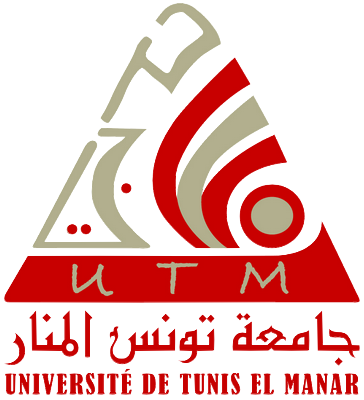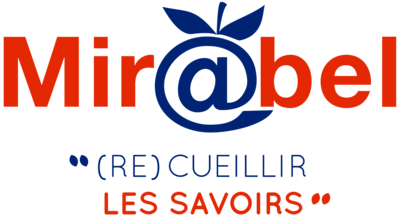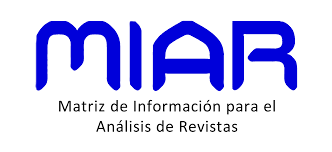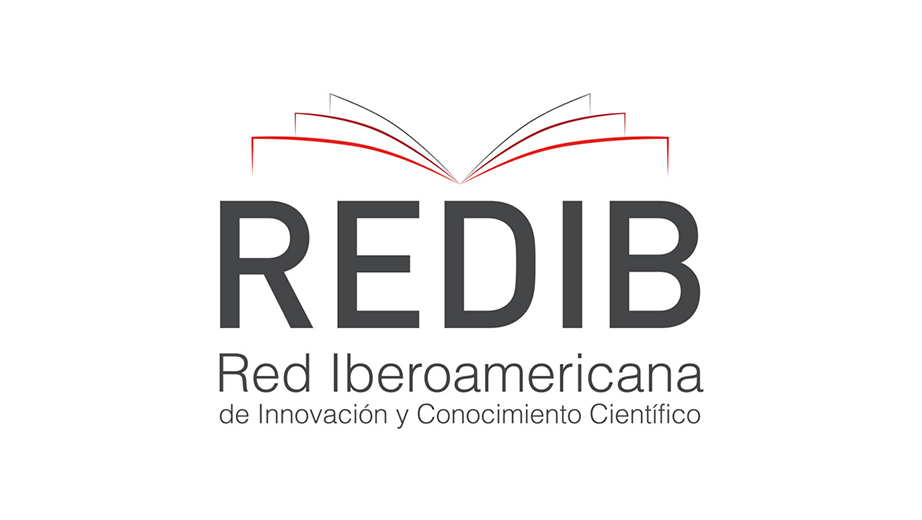From the Literary Piece to the Motion Picture Perspective: Humor and Terror in The Tower of the Seven Hunchbacks
DOI:
https://doi.org/10.71564/dh.vi4.51Keywords:
Emilio Carrere, Edgar Neville, Humor, Terror, Novel, MovieAbstract
Our aim is to study two different viewpoints tackling the challenge of how to combine the humorous and the terrifying in the same work: the literary position and the cinematographic one. In The Tower of the Seven Hunchbacks, both, writer Emilio Carrere and film director Edgar Neville do not give up on their strategies to convey to their respective audience opposite feelings such are terror and humor. However, their approaches when combining these two elements are different: in the novel, humor is at the service of terror, yet in the movie, a role switch occurs: terror is what is at the service of humor. Thus, the main objective of this study is to demonstrate that the film adaptation, using a different approach, can perfectly preserve the spirit of the original work without having to be a simple replica. This is what the work of a movie director is about.
Downloads
References
ALARCÓN, Víctor (2013). “De la risa a la inquietud: el humor en la literatura fantástica”. En David ROAS y Patricia GARCÍA (eds.). Visiones de lo fantástico. Málaga: e.d.a libros, 73-85.
ALLEN, Jonathan (2011). “La torre de los siete jorobados: parodia, humor y géneros simultáneos en la prosa de Emilio Carrere”. Moralia. Revista de Estudios Modernistas, 10: 70-75.
BERGSON, Henri (2008). La risa. Ensayo sobre la significación de lo cómico. Madrid: Alianza Editorial.
BAUDELAIRE, Charles (2001). Lo cómico y la caricatura. Madrid: A. Machado Libros.
BURKE, Edmund (2005). Indagación filosófica sobre el origen de nuestras ideas acerca de lo sublime y lo bello. Madrid: Alianza Editorial.
CASAS, Ana y David ROAS, eds. (2008). La realidad oculta. Cuentos fantásticos españoles del siglo XX. Palencia: Menoscuarto.
——— (2009). “El cuento modernista español y lo fantástico”. En Teresa LÓPEZ PELLISA y Fernando Ángel MORENO SERRANO (eds.). Ensayos sobre ciencia ficción y literatura fantástica. Primer Congreso Internacional de literatura fantástica y ciencia ficción. Madrid: Universidad Carlos III, 358-378.
CARBELO BAQUERO, Begoña (2006). Estudio del sentido del humor: vacilación de un instrumento para medir el sentido del humor, análisis del cuestionario y su relación con el estrés. Tesis doctoral inédita. Universidad de Alcalá.
CARRERE, Emilio (2004). La torre de los siete jorobados. Madrid: Valdemar.
ESTRADA HERRERO, David (1988). Estética. Barcelona: Herder.
FERRERAS, Juan Ignacio (1991). “La novela de terror en la España del siglo XIX”. En Enriqueta MORILLAS VENTURA (ed.). El relato fantástico en España e Hispanoamérica. Madrid: Sociedad Estatal Quinto Centenario, 189-196.
FREUD, Sigmund (1988). “Lo ominoso” (Das Unheimliche)”. En Obras completas. Vol. XVII: De la historia de una neurosis infantil y otras obras (1917-1919). Buenos Aires: Amorrortu Editores, 219- 251.
——— (2000). El chiste y su relación con lo inconsciente. Madrid: Alianza Editorial.
FRANCO TORRE, Christian (2015). Edgar Neville. Duende y misterio de un cineasta español. Santander: Hispanoscope-Shangrila.
GONZÁLEZ-RIVAS FERNÁNDEZ, Ana (2011). Los clásicos grecolatinos y la novela gótica angloamericana: encuentros complejos. Tesis doctoral inédita. Universidad Complutense de Madrid.
HEGEL, Georg Wilhelm Friedrich (1980). De lo bello y sus formas (estética). Madrid: Espasa Calpe.
HERRERO CECILIA, Juan (2000). Estética y pragmática del relato fantástico. Cuenca: Ediciones de la Universidad de Castilla-La Mancha.
HOBBES, Thomas (1987). Antología. Barcelona: Península.
GÓMEZ TARÍN, Francisco Javier (2001). “Edgar Neville: Sainete, intertextualidad y anclaje temporal”. Cuadernos de la Academia, 9: 219-236.
GUTIÉRREZ BARAJAS, María José (2009). Emilio Carrere, escritor de novelas. Tesis doctoral inédita. Universidad de Alcalá.
LABRADOR BEN, Julia María y Alberto SÁNCHEZ ÁLVAREZ-INSÚA (2002). “Génesis y autoría de La torre de los siete jorobados de Emilio Carrere”. Revista de Literatura, LXI (128): 475-503
——— (2004). “Nuevas pruebas documentales acerca de la autoría de La torre de los siete jorobados”. Anales del Instituto de Estudios Madrileños, XLIV: 929-934.
LLOPIS, Rafael (2013). Historia natural de los cuentos de miedo. Madrid: Fuentetaja.
LÓPEZ, José Antonio (s.d.). “Edgar Neville, el primer director español de culto”. Grancanariaweb [http://www.grancanariaweb.com/cine/edgar/edgar.htm].
LÓPEZ IBOR, Juan J., ed. (1967). “Prólogo”. En Juan J. LÓPEZ IBOR (ed.). Antología de cuentos de misterio y de terror, t. I. Barcelona: Editorial Labor, V-XXVII.
LÓPEZ SANTOS, Miriam (2008). “Teoría de la novela gótica”. E.H. Filología, 30 (194): 187-210.
LOZANO MARCO, Miguel Ángel (2000). “El cine de Edgar Neville. Madrileñismo y expresionismo”. En J. A. RÍOS CARRATALÁ. El humor en España: Carlos Arniches y Edgar Neville. Alicante: Biblioteca Virtual Miguel de Cervantes.
MAINER, José Carlos (2000). “El humor en España: entre la tradición y la vanguardia”. En J. A. RÍOS CARRATALÁ (ed.). El humor en España: Carlos Arniches y Edgar Neville. Alicante: Biblioteca Virtual Miguel de Cervantes.
MANNONI, Pierre (1984). El miedo. México: Fondo de Cultura Económica.
MÉNDEZ, Lenina M. (2002). “La torre de los siete jorobados: una obra a ocho manos”. Espéculo. Revista de Estudios Literarios, 21 [https://pendientedemigracion.ucm.es/info/especulo/numero21/jorobado.html].
MOLINA PORRAS, Juan, ed. (2009). Cuentos españoles de terror y humor. Madrid: Akal.
PALACIOS, Jesús (2001). “Prólogo”. En Emilio CARRERE. La casa de la cruz y otras historias góticas. Madrid: Valdemar, 7-24.
——— (2004). “Prólogo”. En Emilio CARRERE. La torre de los siete jorobados. Madrid: Valdemar, 7-40.
——— (2009). “Emilio Carrere y los espíritus bohemios”. En Emilio CARRERE. Los muertos huelen mal y otros relatos espiritistas. Madrid: Valdemar, 9-48.
POE, Edgar Allan (2012). “El pozo y el péndulo”. En Relatos. Madrid: Cátedra.
PORCEL, Pedro (2002). “La torre de los siete jorobados”. Quatermass. Cine de terror, fantasía y ciencia-ficción, 4-5.
RÍOS CARRATALÁ, Juan Antonio (1997). Lo sainetesco en el cine español. Alicante: Universidad de Alicante.
ROAS, David (1999). “Voces del otro lado: El fantasma en la narrativa fantástica”. En Jaume PONT (ed.). Brujas, demonios y fantasmas en la literatura fantástica hispánica. Lérida: Edicions Universitat de Lleida, 93-107.
——— (2001). “La amenaza de lo Fantástico”. En David ROAS (ed.). Teorías de lo fantástico. Madrid: Lecturas, 7-44.
——— (2002). Hoffmann en España: recepción e influencias. Madrid: Biblioteca Nueva.
——— (2008). “En los límites de lo fantástico: el cuento grotesco a finales del siglo XIX”. En Montserrat AMORES y Rebeca MARTÍN (eds.). Estudios sobre el cuento español del siglo XIX. Vigo: Editorial Academia del Hispanismo, 203-222.
——— (2009). “Poe y lo grotesco moderno”. 452°F. Revista electrónica de teoría de la literatura comparada, 1: 13-27 [http://www.raco.cat/index.php/452F/article/view/207040].
——— (2011a). La sombra del cuervo. Edgar Allan Poe y la literatura fantástica española del siglo XIX. Madrid: Devenir Ensayo.
——— (2011b). Tras los límites de lo real. Una definición de lo fantástico. Madrid: Páginas de Espuma.
RODRÍGUEZ MARTÍN, María Elena (2003). Novela y Cine. Adaptación y Comprensión Narrativa de las Obras de Jane Austen. Granada: Editorial Universidad de Granada.
——— (2007). “Teorías sobre la adaptación cinematográfica”. Casa del Tiempo, 11: 82-91.
ROIG, Pau (2017). “Cine 1900-1965”. En David ROAS (dir.). Historia de lo fantástico en la cultura española contemporánea (1900-2015). Madrid: Iberoamericana/Vervuert, 121-142.
SÁNCHEZ-BIOSCA, Vicente (1990). Sombras de Weimar. Contribución a la historia del cine alemán, 1918-1933. Madrid: Verdoux.
SÁNCHEZ CASTRO, Marta (2007). El humor en los autores de la “otra generación del 27”. Frankfurt am Main: Peter Lang.
SAN MIGUEL MONTES, Alfonso (2010). “La torre de los siete jorobados: cuando el Madrid castizo abrió una puerta a un modelo urbano expresionista”. Alicante: Biblioteca Virtual Miguel de Cervantes.
SCHOPENHAUER, Arthur (1996). El mundo como voluntad y representación. Barcelona: Planeta-De Agostini.
TRÍAS, Eugenio (1982). Lo bello y lo siniestro. Barcelona: Seix Barral.
VAX, Louis (1965). Arte y Literatura fantástica. Buenos Aires: Eudeba.
Downloads
Published
How to Cite
Issue
Section
License
Copyright (c) 2017 Mohamed Ben Slama

This work is licensed under a Creative Commons Attribution-NonCommercial 4.0 International License.
Los autores que publican en esta revista están de acuerdo con los siguientes términos:
Los autores conservan los derechos de autor y garantizan a la revista el derecho de ser la primera publicación del trabajo al igual que licenciado bajo una Creative Commons Attribution License que permite a otros compartir el trabajo con un reconocimiento de la autoría del trabajo y la publicación inicial en esta revista, sin hacer uso del material con propósitos comerciales.
Los autores pueden establecer por separado acuerdos adicionales para la distribución no exclusiva de la versión de la obra publicada en la revista (por ejemplo, situarlo en un repositorio institucional o publicarlo en un libro), con un reconocimiento de su publicación inicial en esta revista.
Se permite y se anima a los autores a difundir sus trabajos electrónicamente (por ejemplo, en repositorios institucionales o en su propio sitio web) antes y durante el proceso de envío, ya que puede dar lugar a intercambios productivos, así como a una citación más temprana y mayor de los trabajos publicados.































